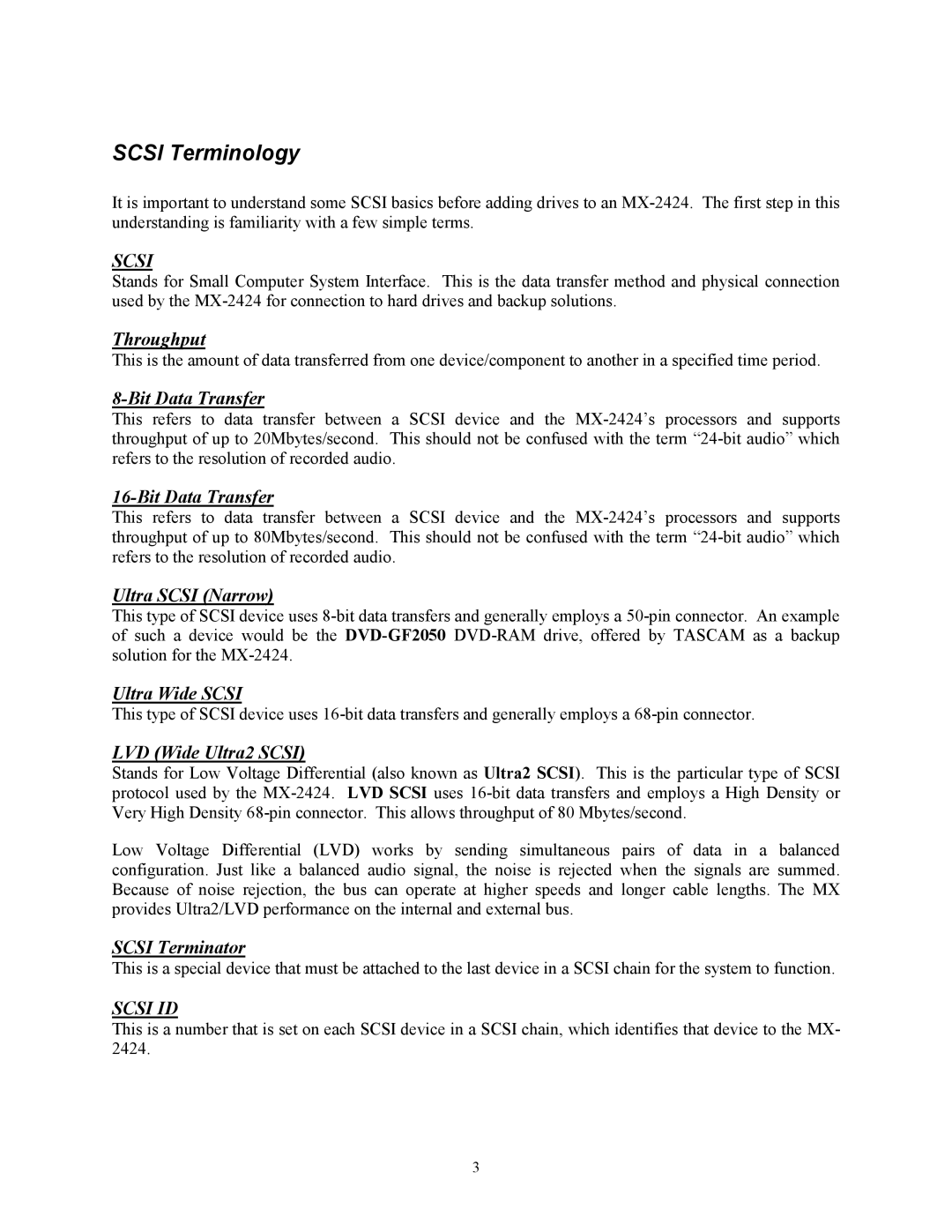MX-2424 specifications
The Tascam MX-2424 is a versatile and powerful digital audio workstation that has earned a place in the hearts of sound engineers, musicians, and producers. Launched in the early 2000s, the MX-2424 is notable for its robust design and a range of features that cater to both studio and live recording environments. At its core, the MX-2424 boasts the capability to record up to 24 tracks of high-quality audio simultaneously, making it ideal for recording full bands, orchestras, or complex studio sessions.One of the standout features of the Tascam MX-2424 is its exceptional audio quality. It supports 24-bit/96 kHz recording, ensuring that every nuance of the performance is captured with clarity and fidelity. The unit employs a hard drive-based system that allows for significant storage capacity, accommodating projects that require extensive editing, mixing, and post-production work. The MX-2424 can utilize up to four internal drives, giving users the flexibility to choose their preferred configurations based on their recording needs.
Navigating the MX-2424 is made easy with its intuitive user interface. The large LCD display provides an overview of tracks, levels, and settings, ensuring that users can make adjustments quickly and efficiently. The built-in transport controls further enhance usability, allowing for smooth operation during recording and playback sessions. The inclusion of MIDI connectivity adds another layer of versatility, enabling integration with other instruments and recording gear.
In terms of connectivity, the Tascam MX-2424 is equipped with multiple I/O options, including analog, digital, and even ADAT lightpipe interfaces. This facilitates easy integration with various audio equipment, ensuring that it can adapt to diverse studio environments. Moreover, the unit supports a range of audio formats, making it a compatible choice for projects that may require output to different systems.
The MX-2424 also features advanced automation capabilities, allowing for precise control over mix levels, panning, and effects throughout each track. With built-in digital signal processing, users can apply various effects without the need for additional hardware, streamlining the workflow and enhancing creativity. Additionally, the availability of software updates from Tascam ensures that users have access to the latest features and improvements, maximizing the potential of this robust audio workstation.
In conclusion, the Tascam MX-2424 stands out as a reliable and feature-rich digital audio workstation. Its combination of high-quality audio recording, versatile connectivity options, intuitive controls, and advanced automation capabilities make it a top choice for audio professionals seeking a comprehensive solution for their recording needs. Whether in a studio or on location, the MX-2424 continues to be a valuable asset for those dedicated to capturing and producing exceptional sound.
